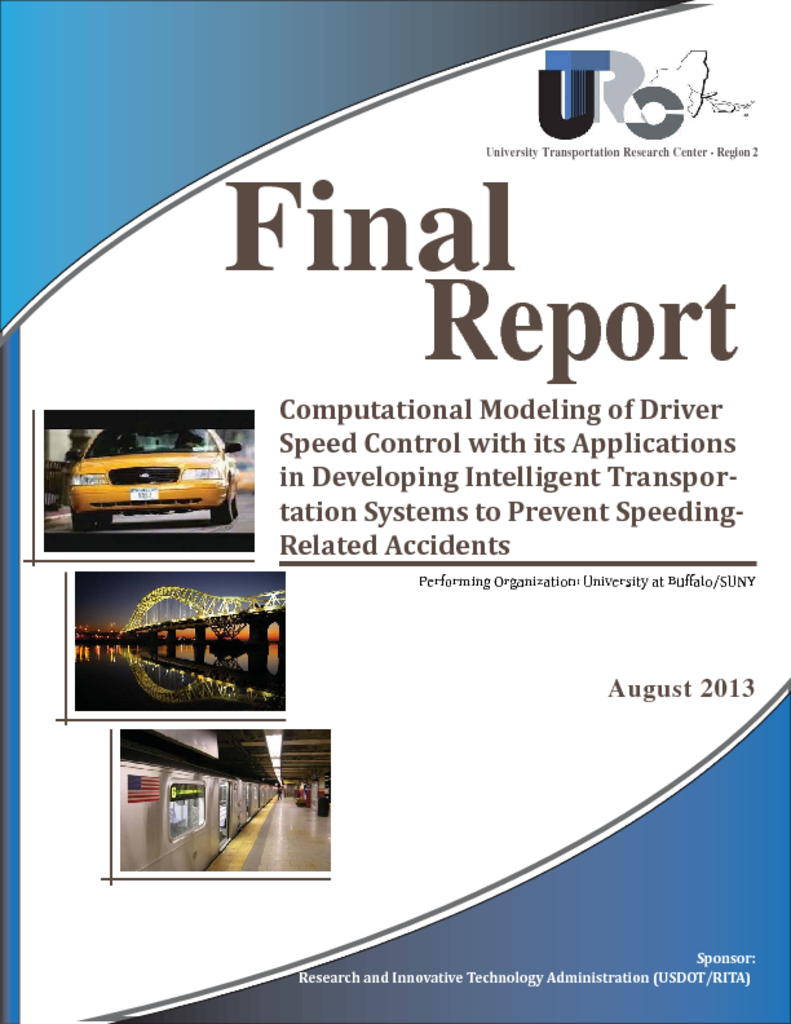Speeding is the leading contributing factor in fatal accidents in NY state, according to NY State Department of Motor Vehicle Accidents Statistical Summary (2009). Understanding and modeling speeding and speed control is one of major challenges in human performance modeling which involves: a) the modeling of several aspects of human cognitive system: perception, decision making and motor control as well as their interaction with the vehicle model; b) individual differences in speed control and prediction of speeding in real time. However, few of existing computational models is able to cover all of these important aspects together. To address this problem, the main objective of this project is to build a new mathematical driver speed control model and apply it to develop an intelligent speeding control system. Multi‐disciplinary approaches are used to build the mathematical model of driver speed control, integrating methods in operations research (Queuing Network‐Model Human Processor, QN‐MHP) and theories in psychology (Rule‐Based Decision Field Theory, RDFT) to predict driving speed, pedal angle, acceleration, the time when drivers exceed the speed limit, and the magnitude of speeding. The model not only quantifies an average driver’s speed control behavior, but also models individual drivers’ decision making references and impulsiveness. A human driver experimental study has been conducted to validate the prediction of the model. The model is implemented in a real‐time intelligent speeding control system, which provides warnings to drivers to prevent speeding proactively. The intelligent system online monitors the pedal behavior of a driver, calculate the probability of speeding for that driver in the next few seconds, and proactively provide necessary warnings to that driver to prevent his or her speeding behavior in real‐time.


